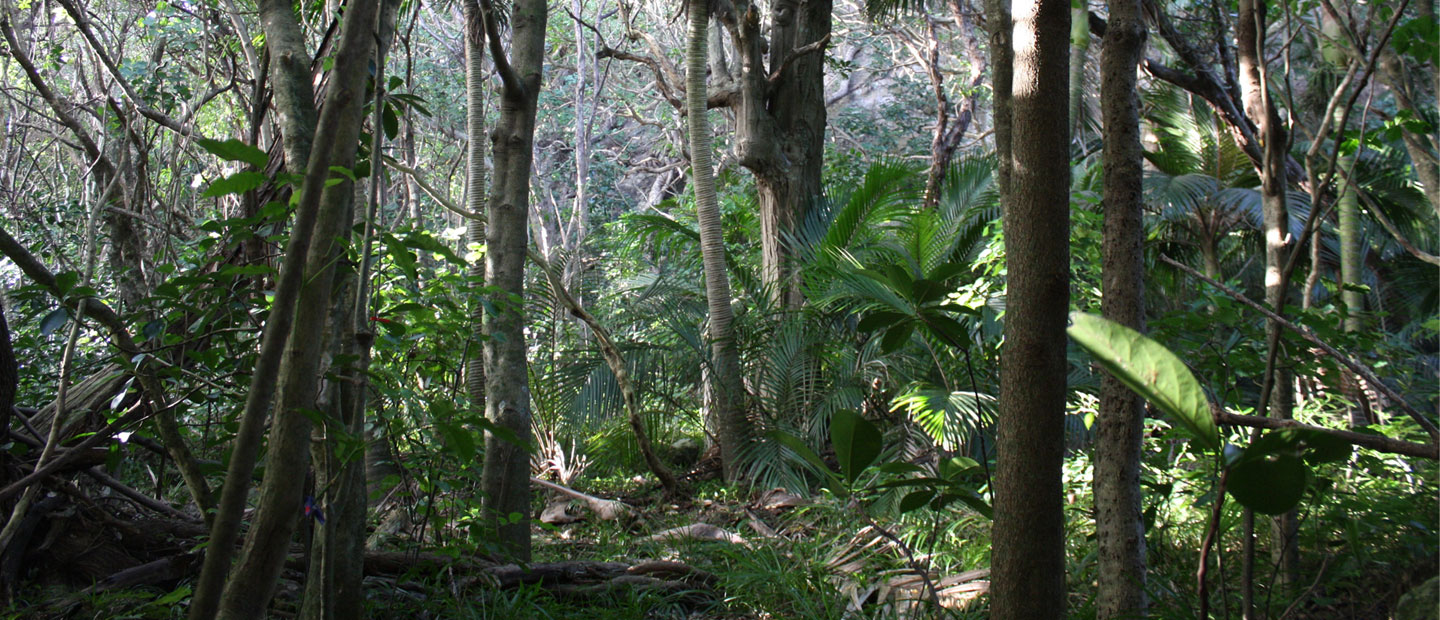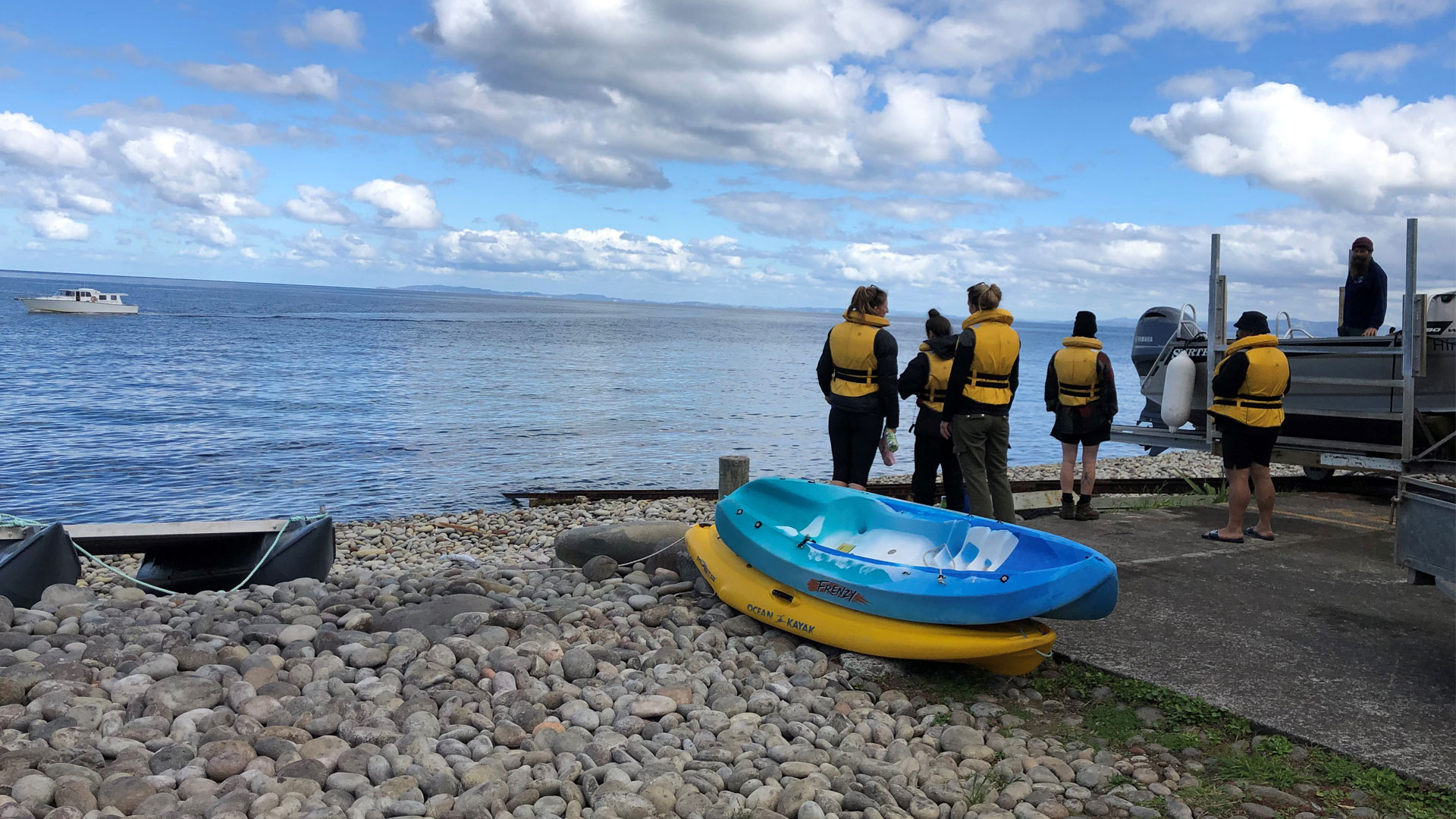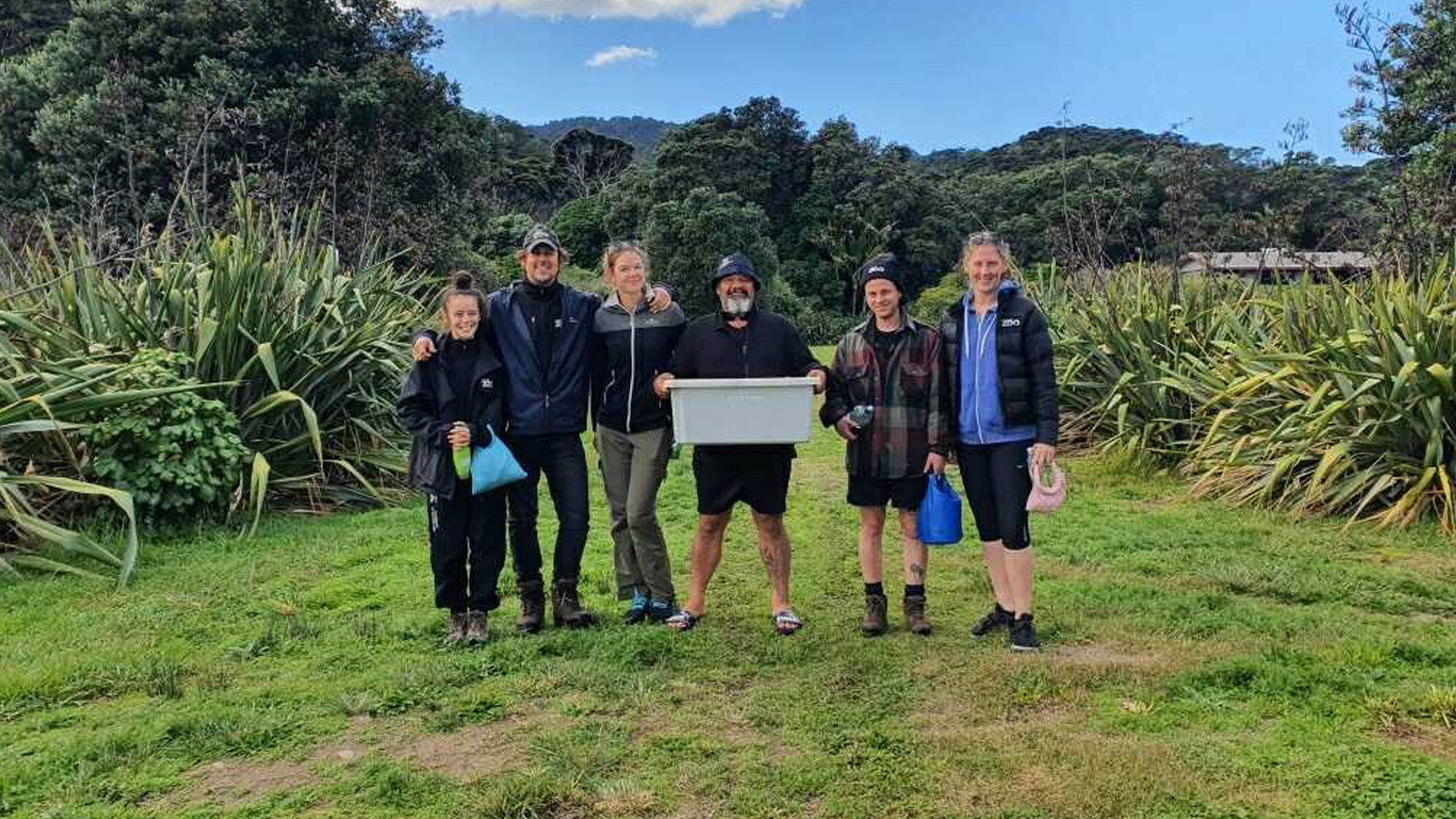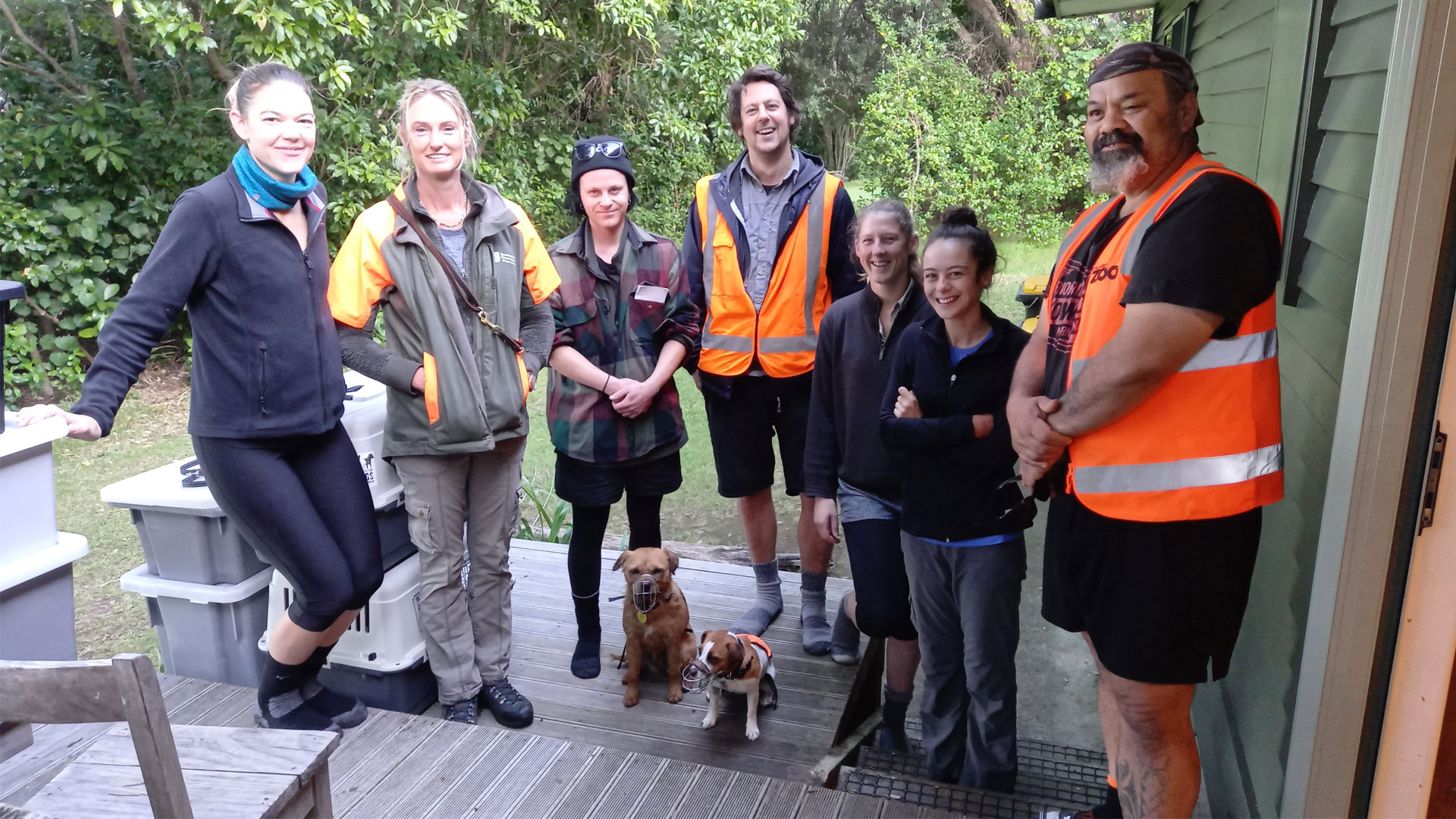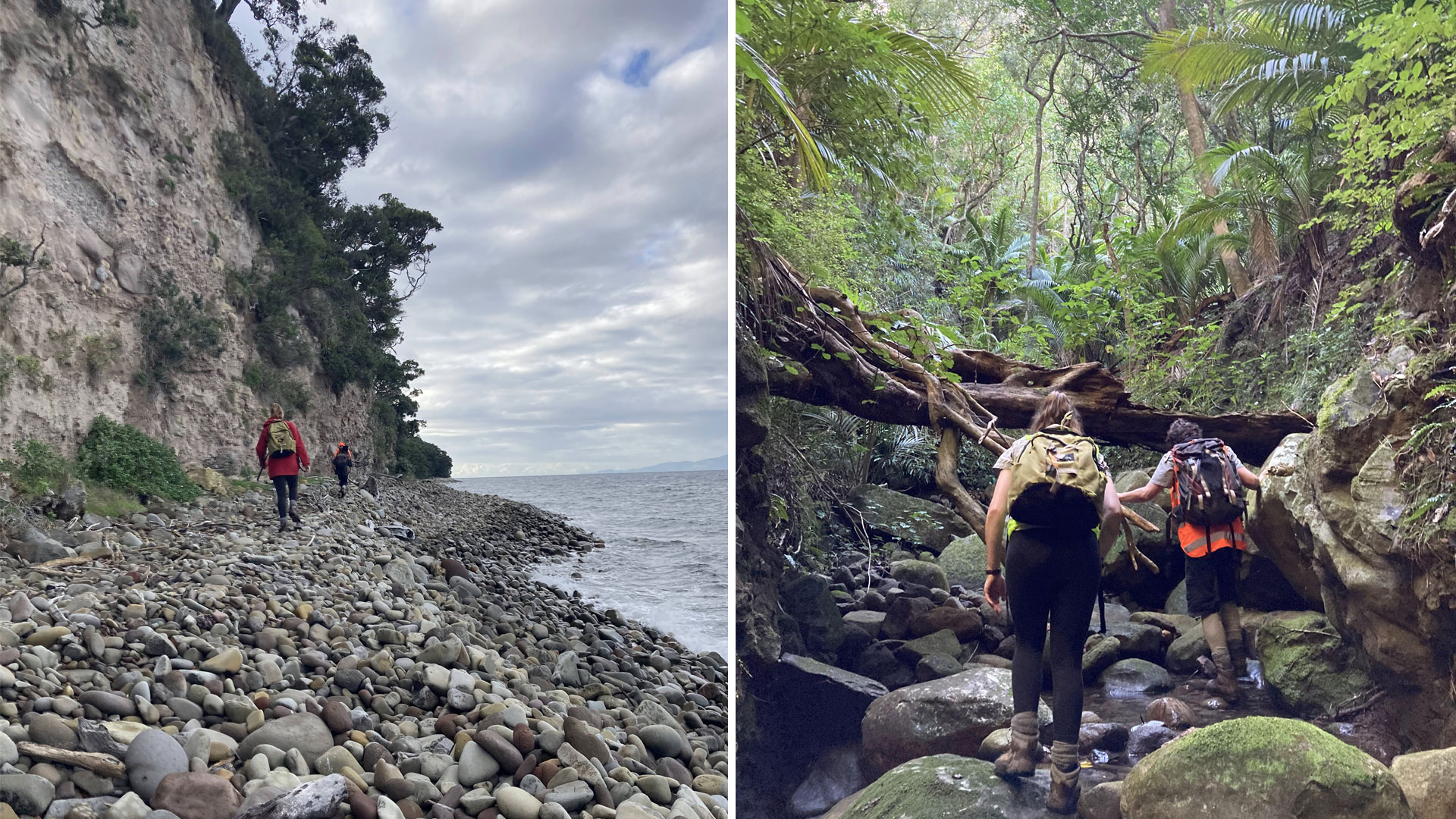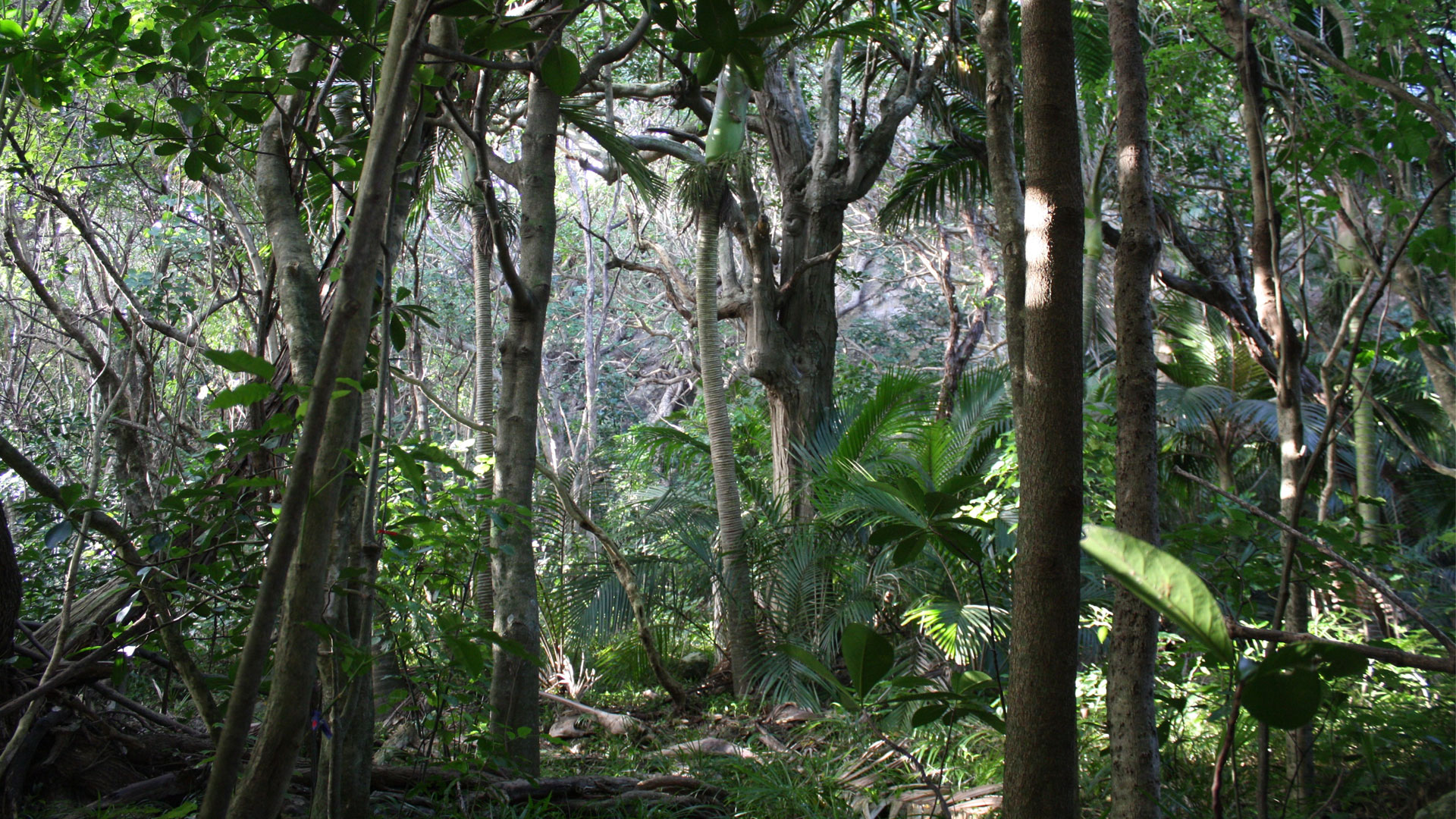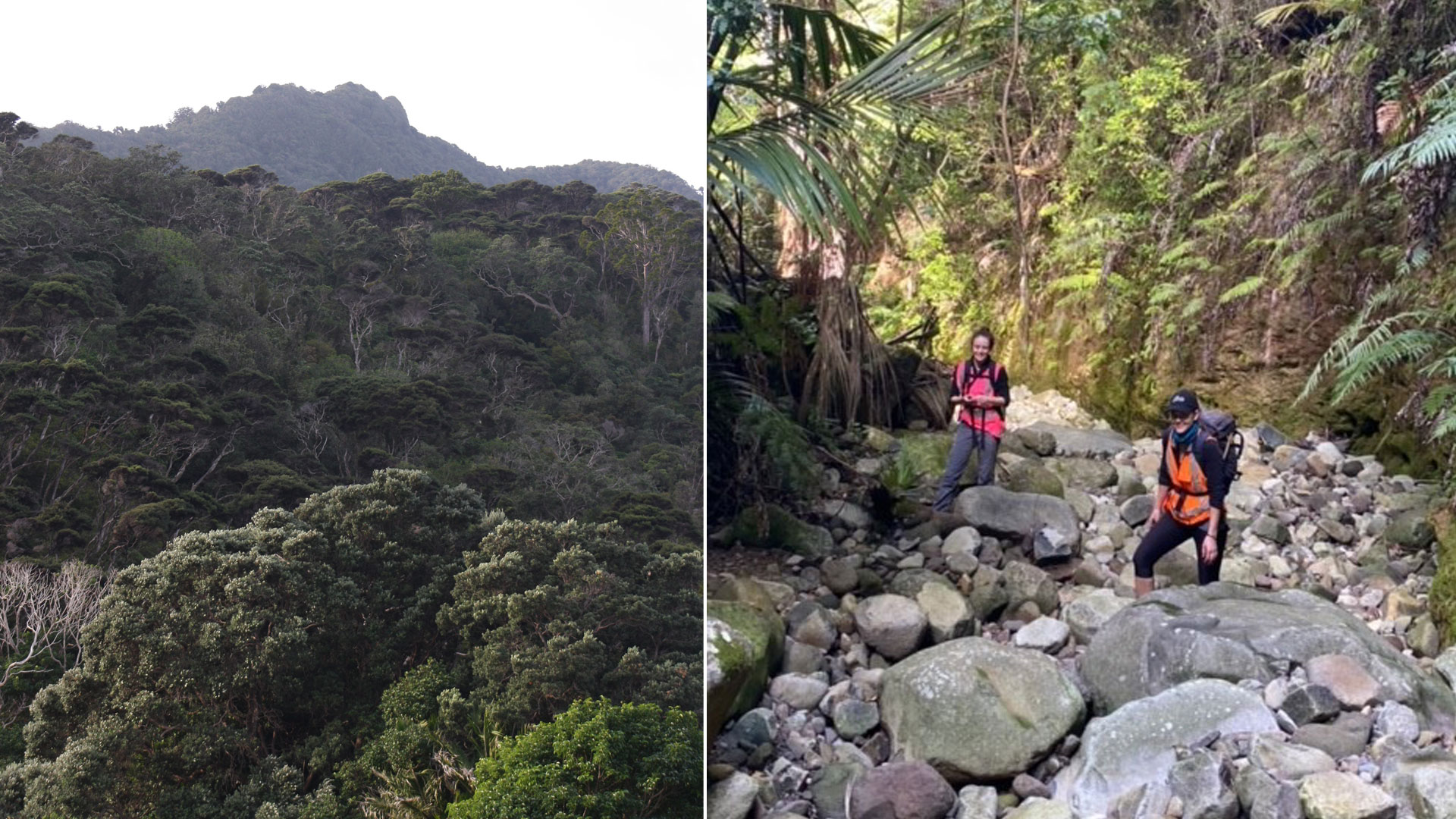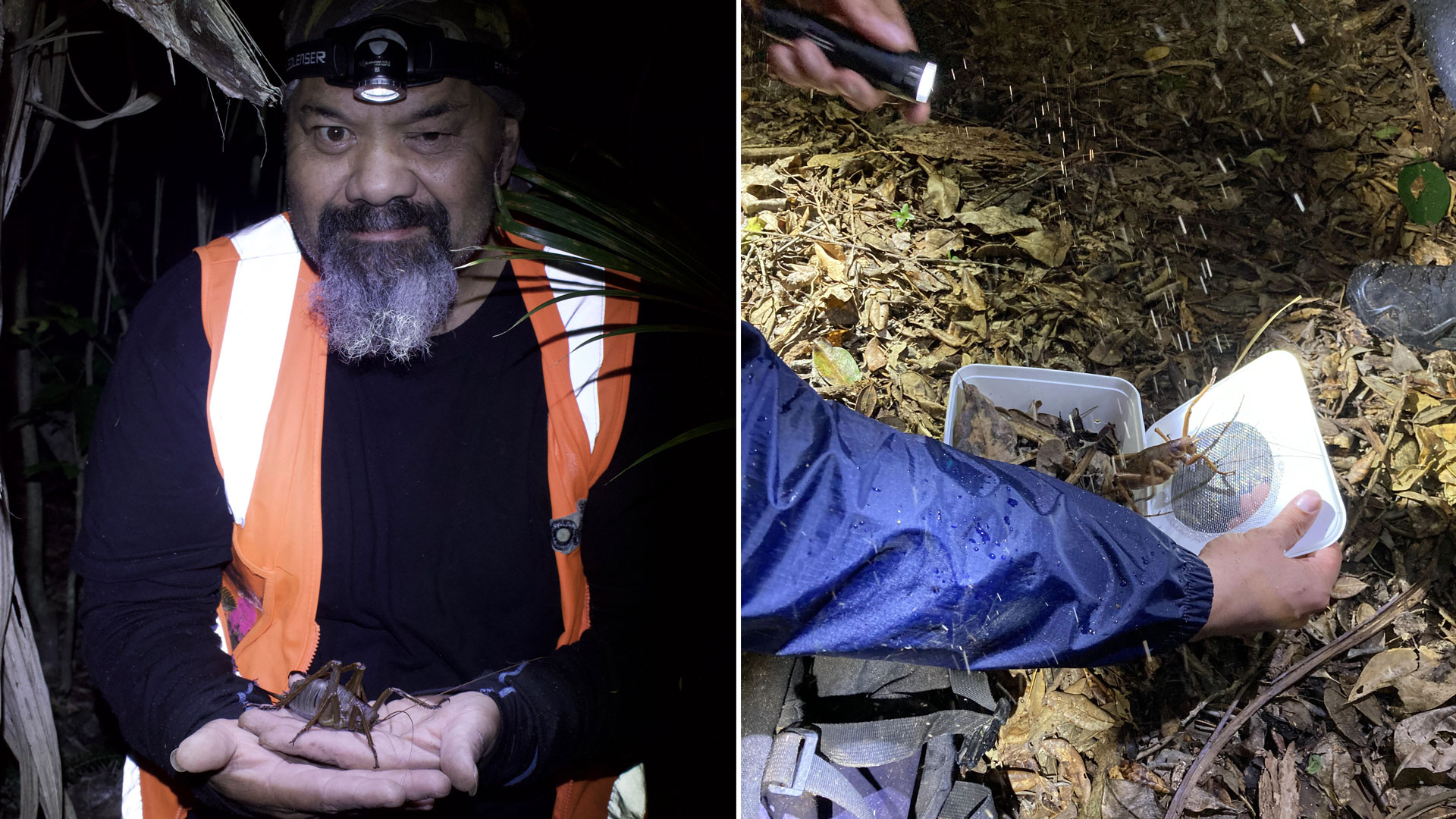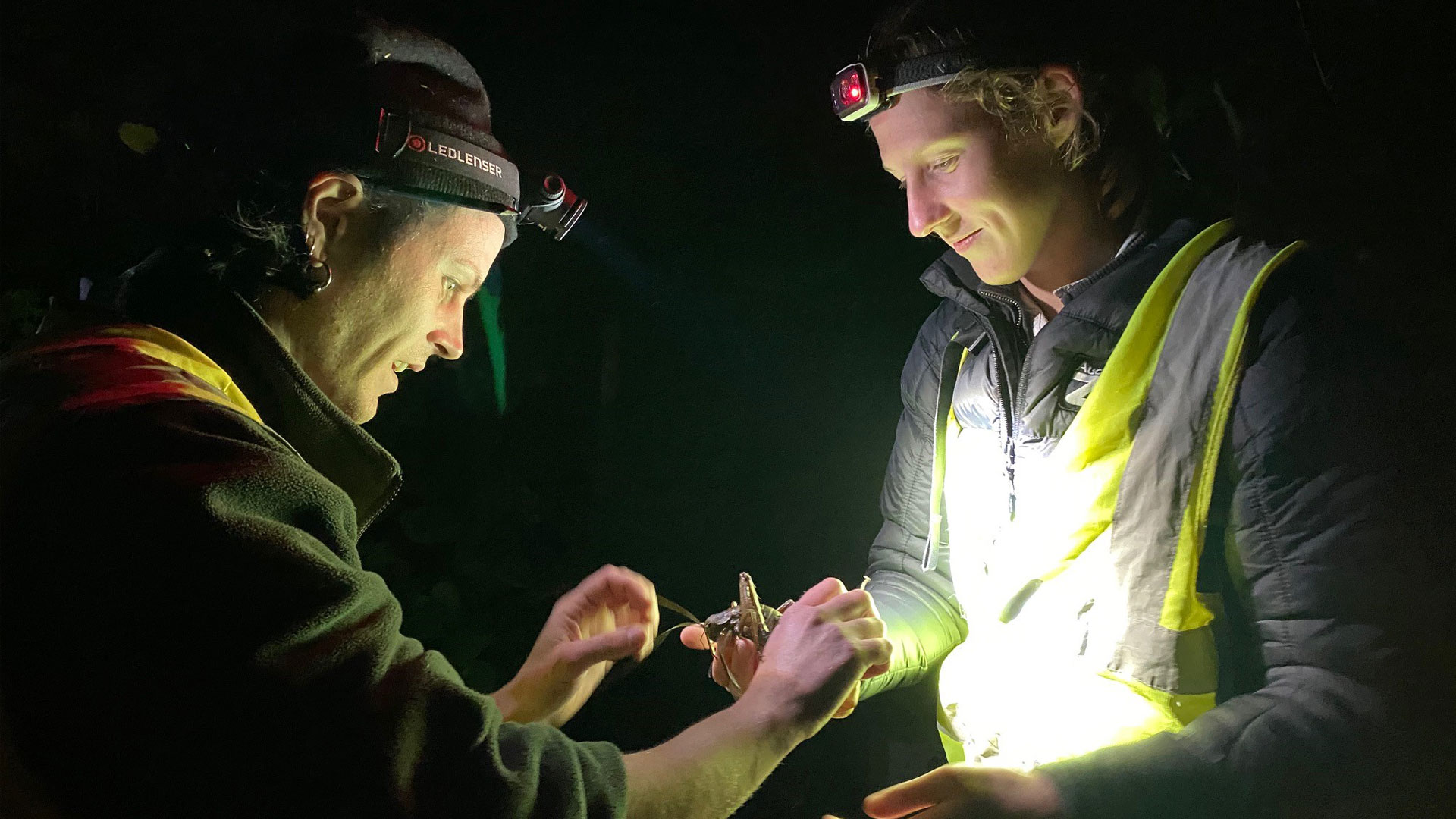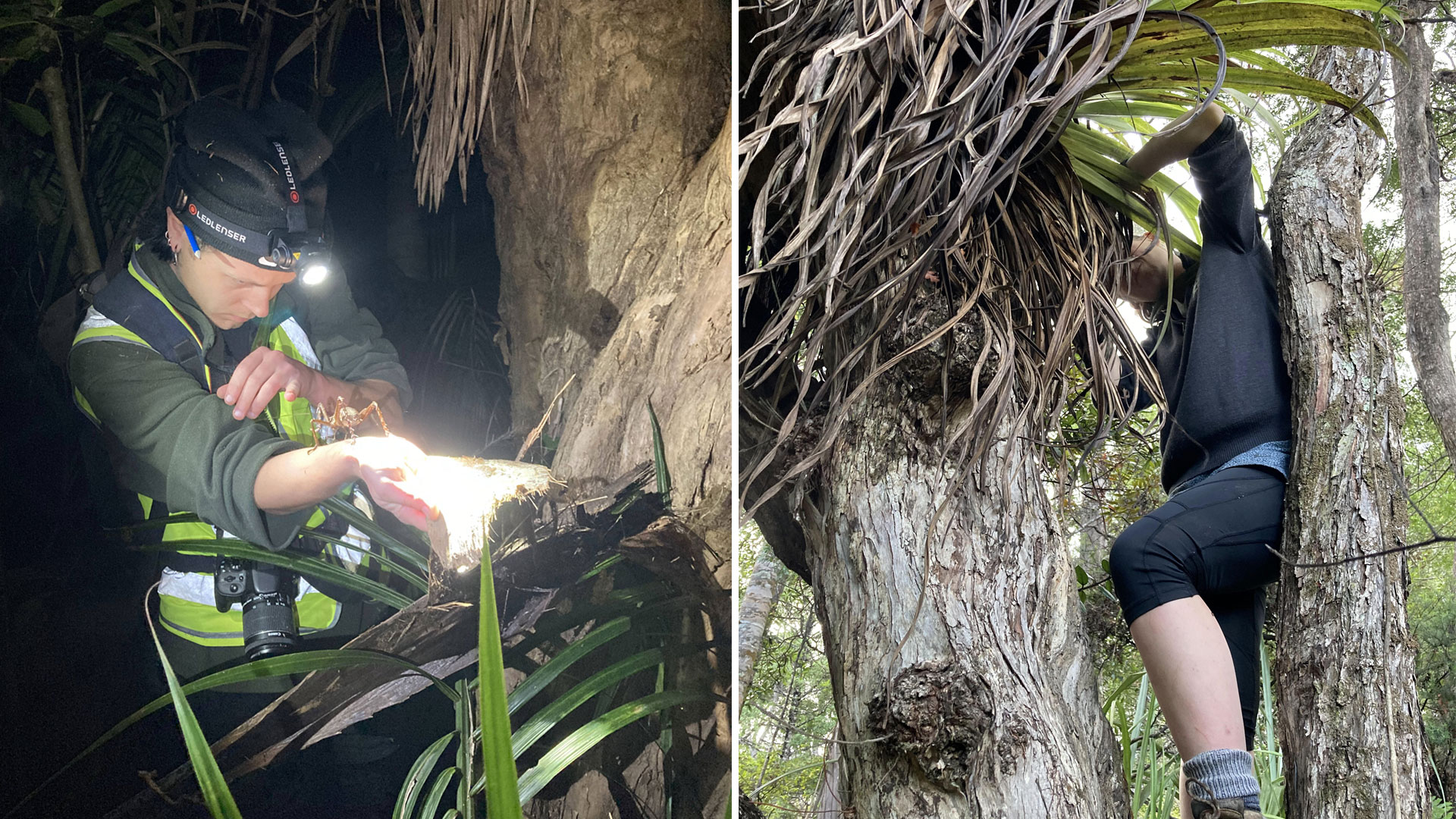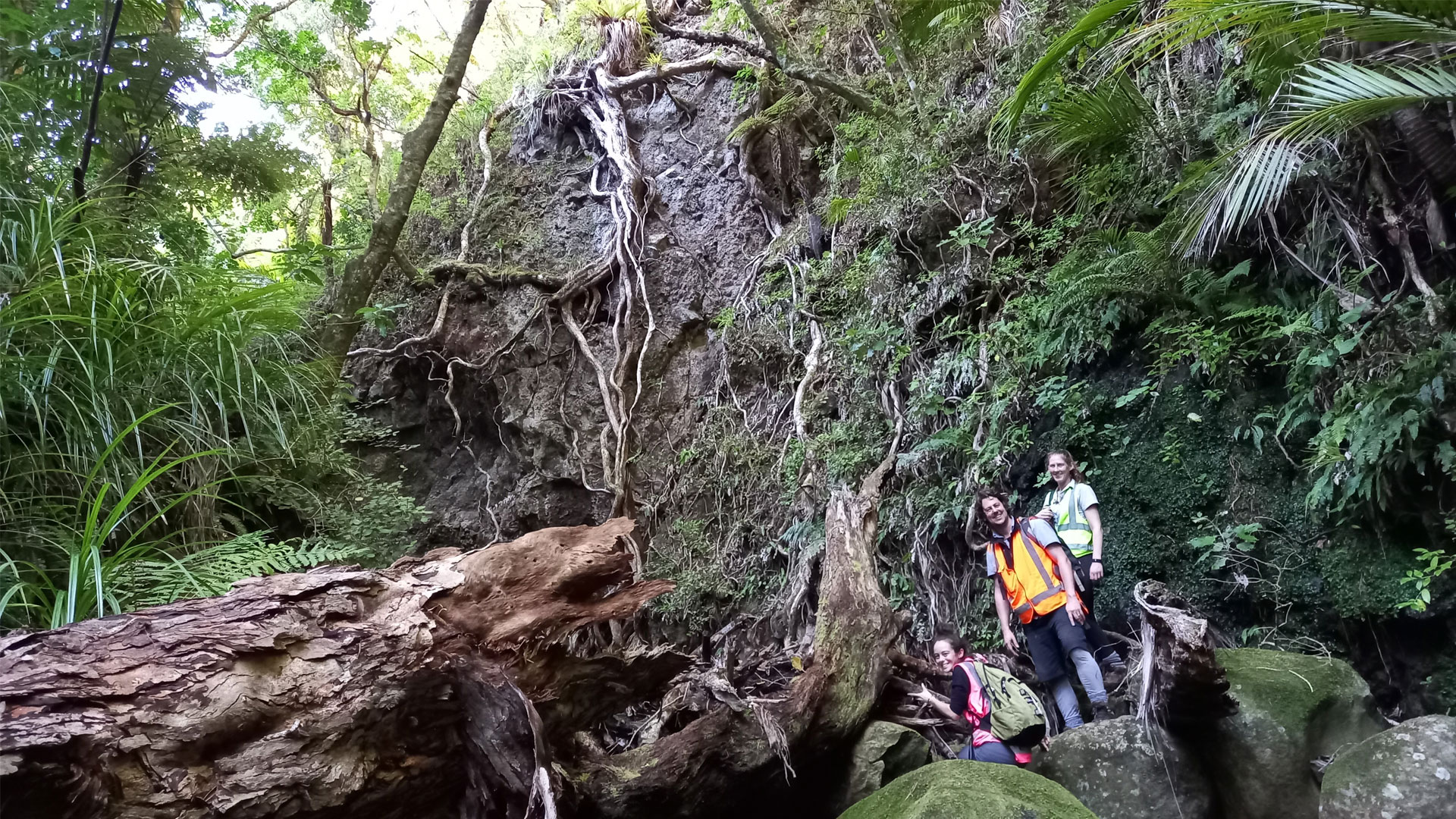TRAVELLING TO A REMOTE ISLAND TO LOOK FOR A GIANT RARE INSECT
Te Hauturu-o-Toi, also known as Little Barrier Island, is a 28km2 nature reserve, located 80km north of Auckland in the Hauraki Gulf. It is jointly managed by the Department of Conservation (DOC) and the Ngāti Manuhiri Settlement Trust. And this island is probably the closest I have been to experiencing a pure New Zealand ecosystem – it’s a place conservationists dream of.
There are no permanent residents, only the rangers that live there with their families, everyone else who visits needs permission, and if you are successful in getting that you still need to go through the rigorous cleaning of all your gear and the biosecurity checks (before and after you have arrived there). After all, you wouldn’t want to be the reason for an unwanted pest incursion on such a pristine island!
Kiwi, tuatara, kōkako, takahikare, kākā, kororā, kākāriki, hihi, pekapeka, kākāpō and wētāpunga are just some of the species that roam this island. But Hauturu has been particularly important over the years for wētāpunga, acting as a refuge from habitat destruction and predation while the species populations elsewhere in New Zealand disappeared. Since then, a breeding and reintroduction project has been established to help protect the future of this species. This is where our mission came in.
Auckland Zoo has been involved in this breeding project since 2012, and this year we needed to collect new adult specimens from the wild. It’s important in breeding programmes to maintain high genetic diversity for population fitness - the ability to survive!


